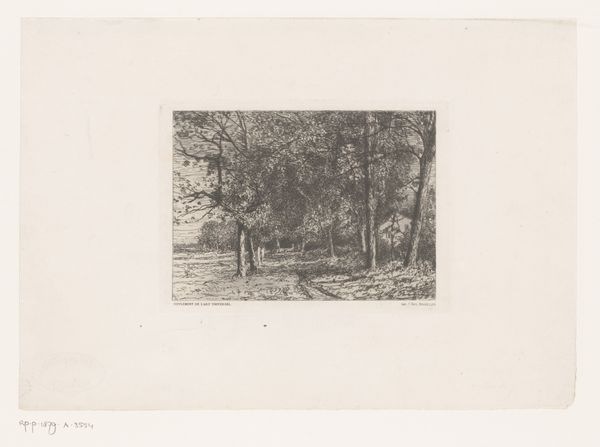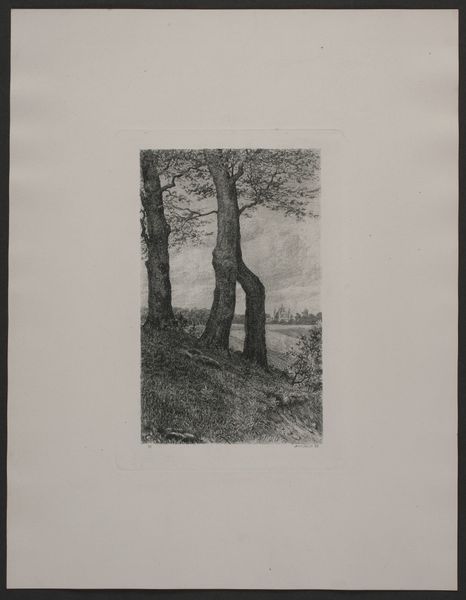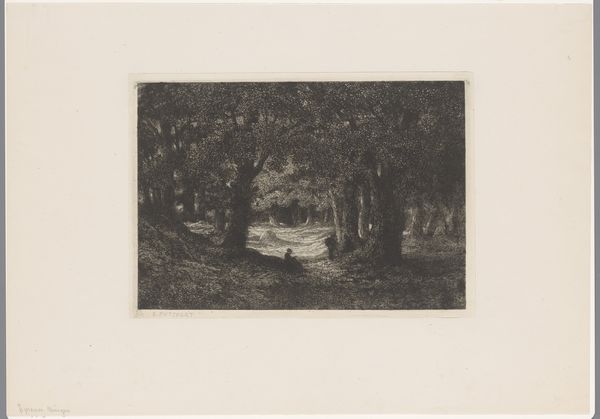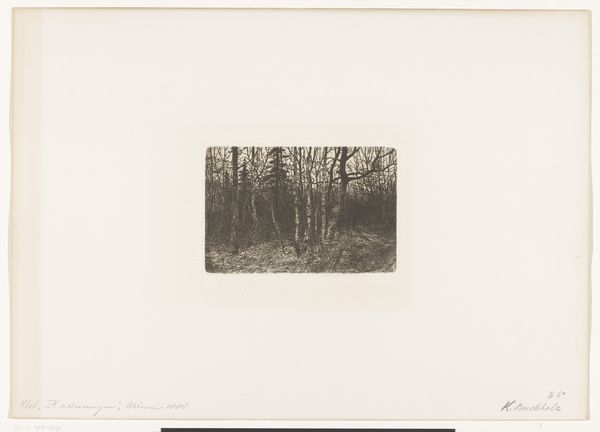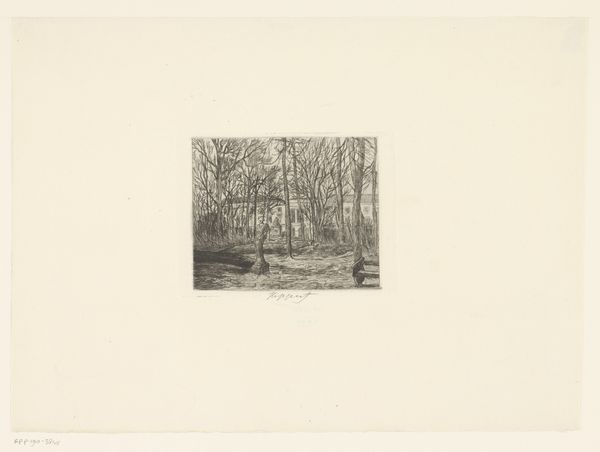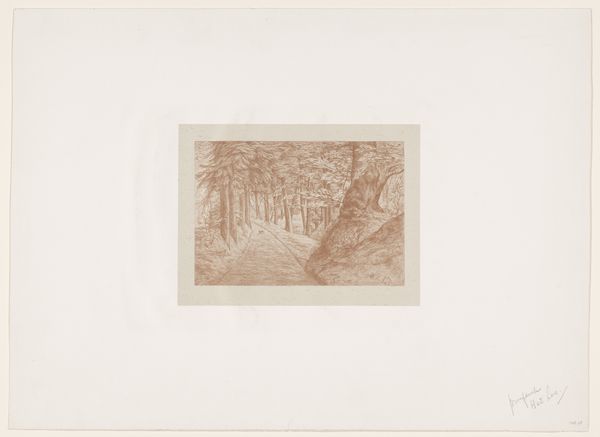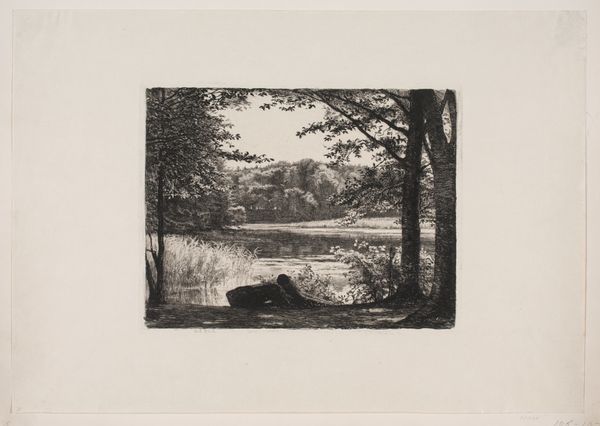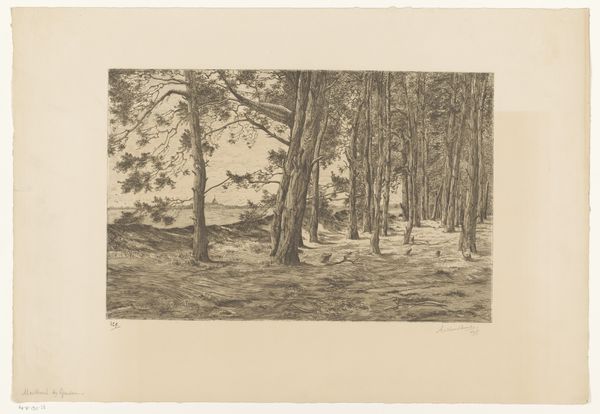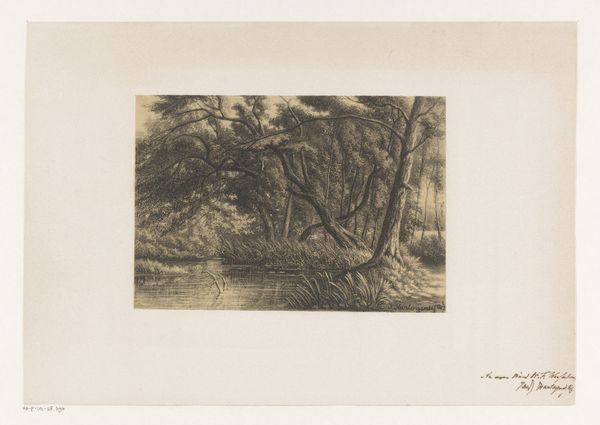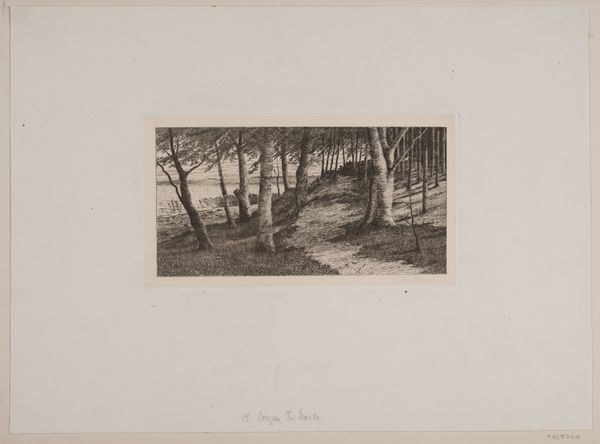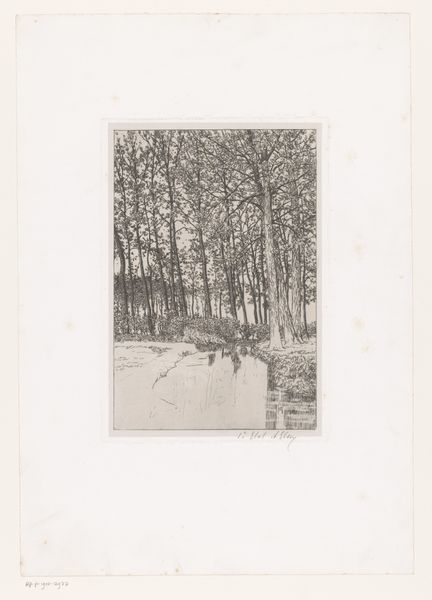
Dimensions: 125 mm (height) x 177 mm (width) (billedmaal)
Curator: Looking at "Fuglesangsøen" by John Lübschitz, dating from 1858 to 1941, which is rendered as a print using the etching technique, one immediately notes the fascinating interplay of dark and light that defines the composition. Editor: My first impression is that there's a melancholy, almost haunting feel to this scene. The long shadows and bare branches evoke a sense of solitude, as though the viewer is an unseen observer in a quiet, perhaps forgotten place. The trees themselves seem to be like repeated icons, almost like solemn markers or figures. Curator: It is remarkable how Lübschitz has achieved such depth with what appear to be very simple tools and materials. Examining the print closely, one can appreciate the labor involved in creating the different tonal values – consider how the controlled corrosion process required time, precise material selection and meticulous working of the metal plate. How would you say these materials shape the experience? Editor: Absolutely. Light has a particular significance. Observe how the eye is led through this somber grove towards a field and eventually some other form in the far-off distance. The etching's visual language conveys nature, life, but ultimately temporality, because of the long shadow and implied sunset; those details invite introspection on the passage of time. The row of trees could be read almost as ancestral figures standing solemnly near water. Water is a symbol of healing but is used in tandem with bare trees, a sort of antithetical message of healing needed when one is old. Curator: Indeed, and understanding the socio-economic factors impacting Lübschitz and his process helps appreciate that etching as a method became democratized, moving printmaking closer to a craft accessible to more practitioners, thus democratizing art production and consumption during this time. It speaks volumes about how art creation changed during Lübschitz's long career. Editor: Ultimately, the image becomes more potent with understanding the technique and context. The print is less about a photorealistic depiction and more a reflection on the shared understanding of life cycle imagery. Curator: Precisely! Understanding this etching’s creation deepens the image. Editor: Yes. Understanding of temporality and melancholy resonate further thanks to this print, indeed.
Comments
No comments
Be the first to comment and join the conversation on the ultimate creative platform.
